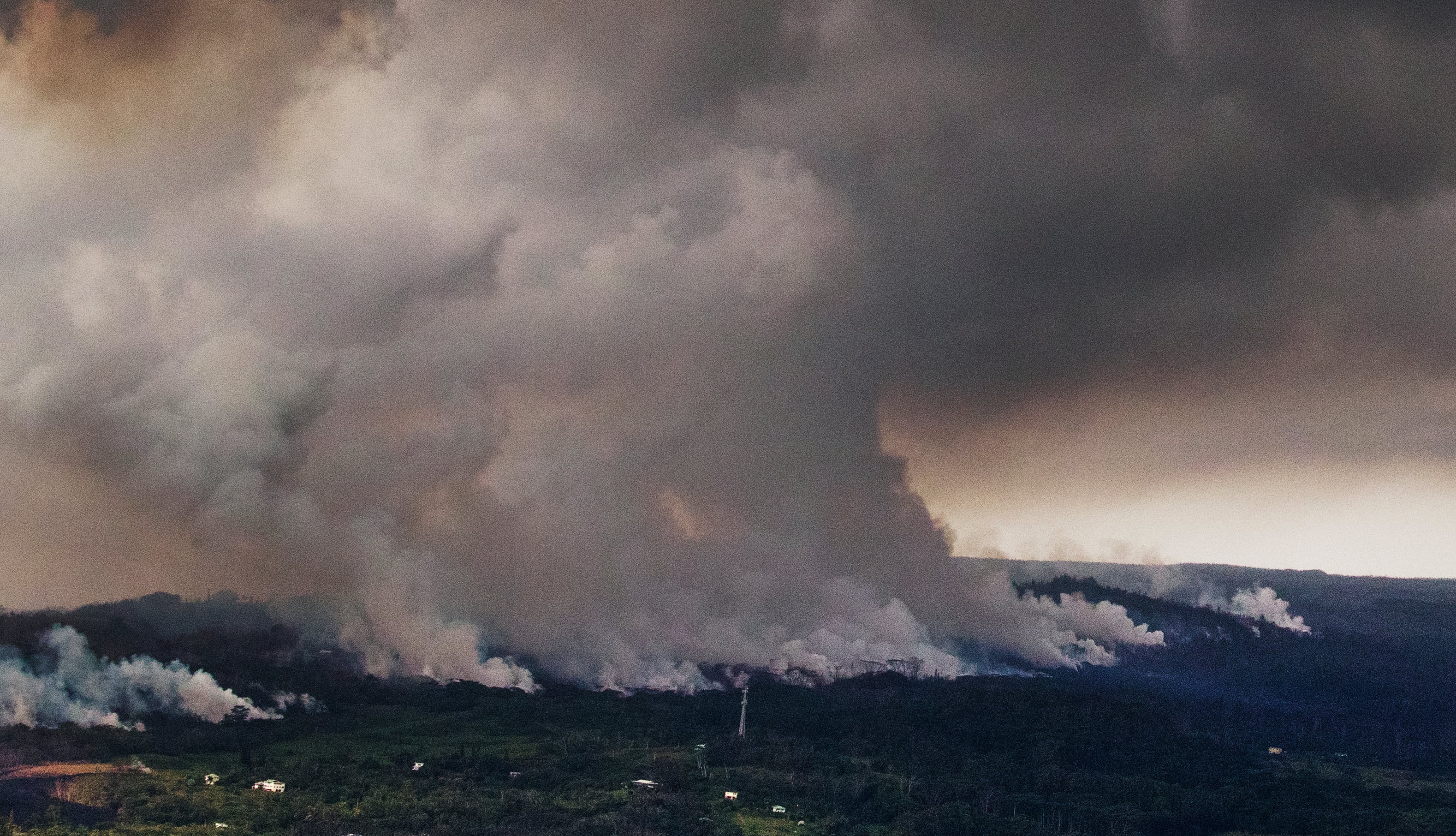This story has been updated since it was originally published at mid-day Thursday EST.
Hawaii’s Kilauea volcano has erupted from its summit, shooting a dusty plume of ash about 30,000 feet into the sky.
Mike Poland, a geophysicist with the U.S. Geological Survey, confirmed the explosion on Thursday. It comes after more than a dozen fissures recently opened miles to the east of the crater and spewed lava into neighborhoods on Hawaii’s Big Island.
Those areas were evacuated as lava destroyed at least 26 homes and 10 other structures.
Hawaii Gov. David Ige said the state is forming a joint task force that could handle mass evacuations of the Big Island’s Puna district if lava from Kilauea volcano covers major roads and isolates the area.
Hawaii Army National Guard Brig. Gen. Kenneth Hara, the task force commander, said he’s anticipating potentially having to evacuate about 1,000 people, based on what he’s been told by Hawaii County. But he said some people may choose to stay behind because they are self-sufficient.
Hara said there are currently about 1,200 soldiers and nine UH-60 helicopters currently training on the Big Island. He may also request forces from the U.S. Pacific Command if needed.
The crater sits within Hawaii Volcanoes National Park, which has been closed since May 11.
Officials have said they didn’t expect the explosion to be deadly as long as people remained out of park.

Earthquakes were damaging roads and buildings on Hawaii's Big Island on Wednesday as ash emissions streamed from Kilauea volcano.
Cracks formed on a highway near the entrance to Hawaii Volcanoes National Park, said the Hawaii Police Department.
“We’re all safe, and I wish they’d open the park back up, but they have to keep it safe for everybody,” said Ken McGilvray, an area resident. “We live on a volcano!”
Because of the falling ash, USGS scientists operated from a backup command center at the University of Hawaii at Hilo.
For those on the ground near the lava vents, health warnings were issued because of dangerous volcanic gases.
An air-quality alert was in effect for an area near the Lanipuna Gardens subdivision. That area was evacuated shortly after the eruption began May 3. Most fissures are in that subdivision or the adjoining Leilani Estates neighborhood.
Associated Press writers Sophia Yan, Audrey McAvoy, Caleb Jones in Volcano, Hawaii, Jennifer Sinco Kelleher in Honolulu, and Mark Thiessen in Anchorage, Alaska, contributed to this report.




